Hitching a ride – how to mount mobile mesh radios to ground vehicles, and why you’d want to
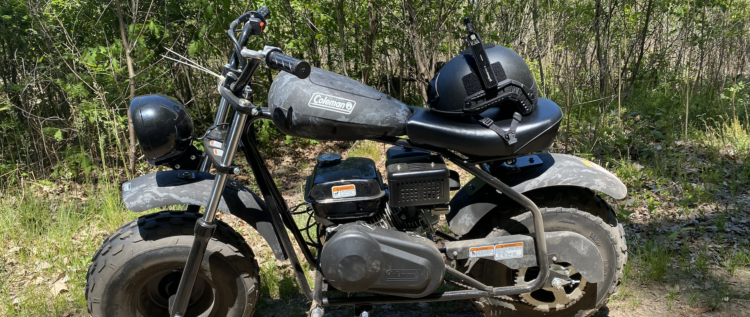
When we talk about deploying mobile mesh networking radios or nodes to warfighters, emergency and first responders, and law enforcement officials, it usually involves handing a node to an individual. That individual then connects the node to their mobile device either via Bluetooth or wire and then carries it with them – attached to their body or in the side pocket of a pack.
But there are multiple other, useful ways to deploy mobile mesh networking nodes.
As we’ve discussed in previous posts on The Last Mile, these nodes can be attached to aerial assets and used as high-altitude radio relays, thereby blanketing a massive geographic area (more than 126 miles in our latest testing) with connectivity. They can also be deployed as temporary or semi-permanent relay stations on towers and in underground structures to deliver mission-critical communications and situational awareness for tactical operators when disaster strikes.
But did you know that they can also be attached to ground vehicles?
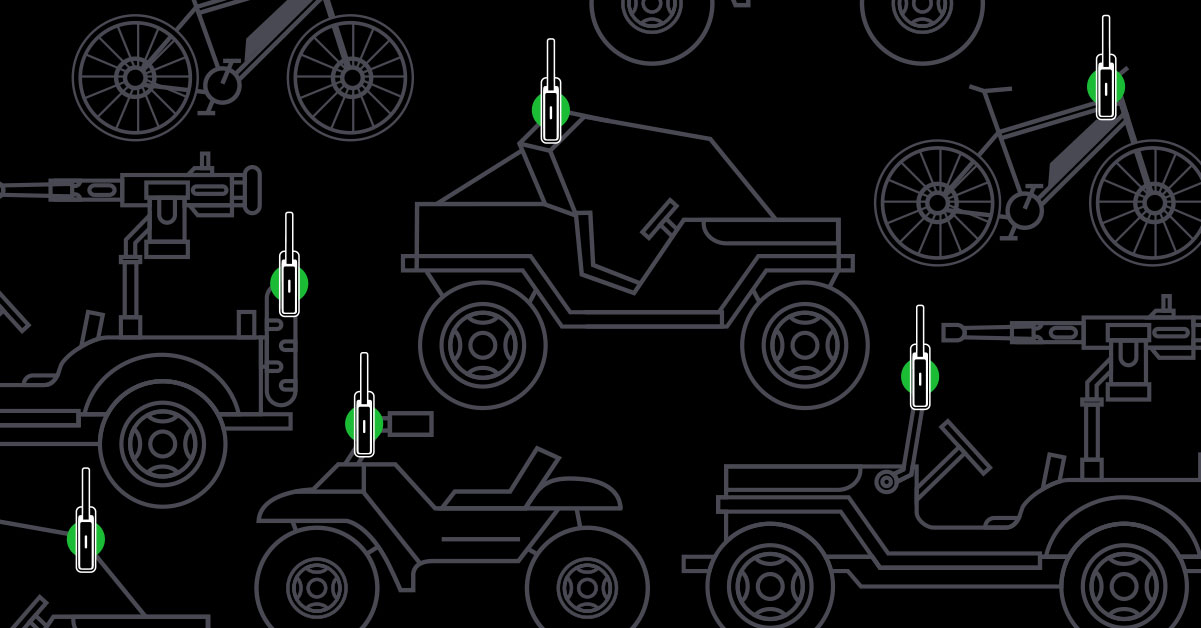
goTenna conducted vehicle-mounted testing with industry partners like Tough Stump Technologies as well as with customers from military, law enforcement, and wildfire response organizations. Ground vehicle mounting is something that these types of operators invariably want to explore and demonstrate. In fact, here is a video of Zeb Jaillet, SUAS & Tactical Networking Program Manager at Tough Stump, demonstrating how to mount goTenna Pro X radios to masts and ground vehicles:
A central relay and added range for the mission
Mobile mesh networking nodes operate as both receivers and transponders. They build ad-hoc networks with incredible range by receiving and then retransmitting a signal from node to node.
With this technology, an individual that’s part of a team – whether it’s a wildfire hotshot crew, a military recon team, or a search and rescue squad – can effectively communicate with their teammate that’s furthest away, even if they’re technically out of range. This is possible because the mobile mesh networking nodes will “bounce” the signal to them using the nodes carried by the teammates that are in-between their locations.
Here’s a notional illustration of that in action:

Now imagine you have dismounted military units walking alongside an armored ground vehicle. Or a search and rescue team, where an ATV or truck with supplies is flanked by unmounted individuals that are spread out in all directions to cover more ground. In these environments, if the vehicle stays relatively in the middle and is equipped with a mobile mesh networking radio set to “relay mode,” that vehicle is doubling the effective size of the network.
But there’s another way mounting a mobile mesh networking node to a ground vehicle can increase the effective size of the network. Many mobile mesh network nodes – including the goTenna Pro X – feature an SMA antenna port, allowing them to be connected to the inline amplifiers and antennas of radio systems, including those integrated into military and law enforcement vehicles. This added height and signal boost can extend the range of the network even further, allowing unmounted units to stray even further from their counterparts without ever losing communications or situational awareness.
Extending the range of the network is just one of the reasons why it’s a smart idea to mount a mobile mesh networking node to ground vehicles.
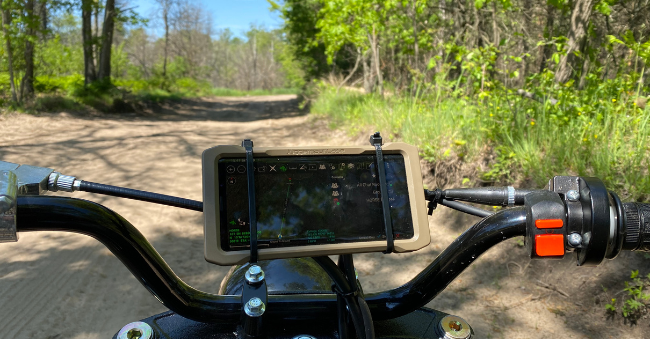
Mitigating blue-on-blue incidents and increasing vehicle awareness
In some military and law enforcement operations, there is the chance that tactical operators will commandeer an adversary’s vehicle or utilize a nontraditional vehicle. While this can deliver a massive advantage to the tactical operator, it can also create confusion in multi-domain operations.
For example, let’s say an adversary’s tracked, armored vehicle – such as a tank or armored personnel carrier – is commandeered by friendly forces. They now have the massive advantage of having a tank or APC. But their air support might not know they’re operating that ground vehicle and decide to attack it, creating an inadvertent friendly-fire incident. The same could be said should a nonstandard or civilian vehicle be utilized in service to the mission.
By connecting a mobile mesh networking relay to the outside of a heavily armored vehicle and using the SMA antenna port to amplify its signal, all other units in the area will now see that vehicle in their situational awareness applications, such as ATAK. This can alert them to the fact that the ground vehicle has been commandeered and keep them from attacking their own allies.
This same system could be used when multiple allied nations are conducting an operation together to ensure there is no confusion between friendly and adversarial vehicles and units.
But it’s not always about keeping allies from attacking each other. Sometimes you just need to know where a ground vehicle is located. By mounting a mobile mesh networking node to a vehicle, that vehicle can now appear in ATAK and other situational awareness apps, ensuring that tactical operators always know its physical location.
This can be especially useful with convoys and supply vehicles. If a convoy or supply line is attacked and individual vehicles take evasive maneuvers, they would still be able to see each other’s location and be able to rendezvous in a safe location.
So, there are clearly benefits to mounting a mobile mesh networking device to a ground vehicle. But what does that process look like, and what tools are needed to make that a reality?
Necessity is the mother of invention
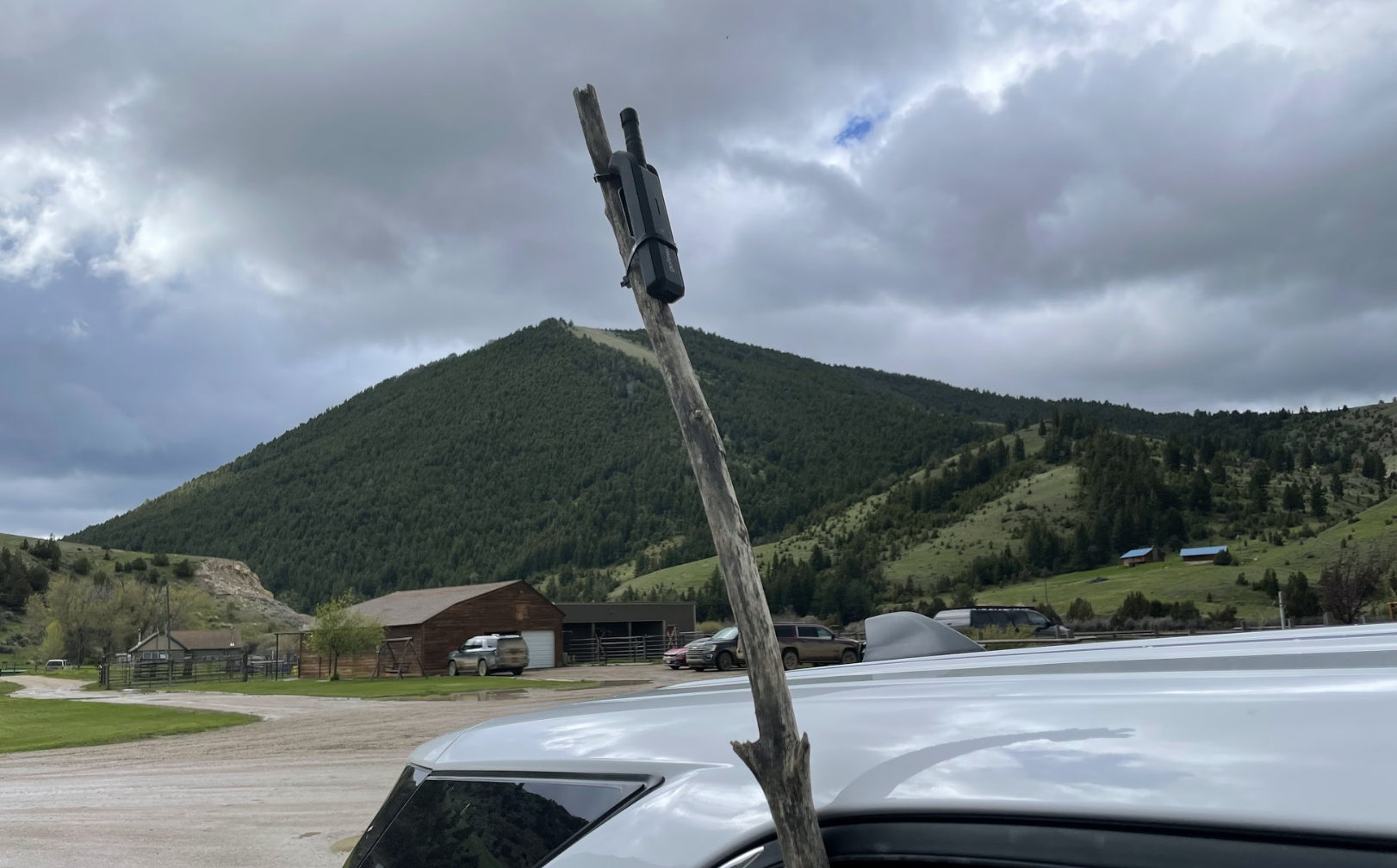
When it comes to mounting a mobile mesh networking device to a vehicle, the options are as varied and wide as the human imagination. This is especially true with the goTenna Pro X because of its small size and low weight. Ultimately, how these devices are mounted to a ground vehicle ultimately comes down to the type of vehicle and the use case.
Should a mobile mesh networking radio need to be attached to the handlebars of a bike or motorcycle, zip ties or 550 cord could very well do the trick. As long as the antenna is not obscured – which could impact effective range and performance – practically anything short of a wad of chewed gum would suffice.
For ground vehicles such as Humvees, trucks, and ATVs, there are more options. While a goTenna Pro X can operate in relay mode without being connected to a smart device, the functionality and capability only increase when it’s paired to a smartphone or tablet.
In these instances, mounting becomes more of a challenge for the smart device than for the mobile mesh networking node, since it needs to be visible to the vehicle’s occupants and needs to be secured. Luckily, there are a number of commercially-available, ruggedized cases and mounting options for smart devices that could easily be used to keep these devices visible and secure within a vehicle.
The real challenge is presented by armored vehicles. The inside of heavily armored ground vehicles can effectively function like a faraday cage – keeping all radio waves from escaping.
In this instance, the mobile mesh networking node needs to be mounted to the outside of the vehicle with a physical cable connecting to a smart device on the inside of the vehicle. But that has to be done in such a way that it doesn’t compromise the integrity of the armor. In other instances, the SMA port can be used to attach the mobile mesh networking device to the inline amplifier of the armored vehicle’s existing radio system, and the preinstalled antenna on the outside of the vehicle can function to broadcast the signal.
There are many good reasons to attach a mobile mesh networking device to a ground vehicle. It extends situational awareness to the vehicle, itself. It extends the range of mobile mesh networks, and it can even help to mitigate or eliminate blue-on-blue, or green-on-green incidents.
And when it comes time to attach a mobile mesh networking device to a ground vehicle, necessity is the mother of invention. Practically anything on hand – from zip ties to 550 cord – could be used to do the job. But as these devices become increasingly popular and more widely adopted across the military, commercial providers that make military-grade, ruggedized mounts and cases are taking note and working to fill the need.




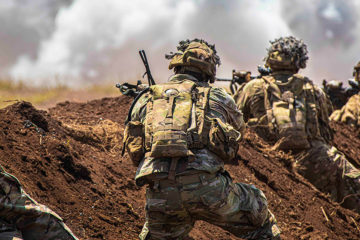


No Comment